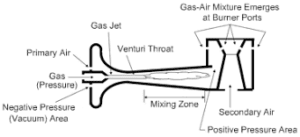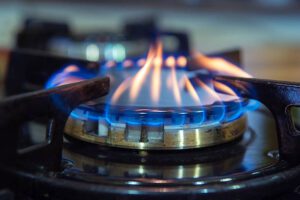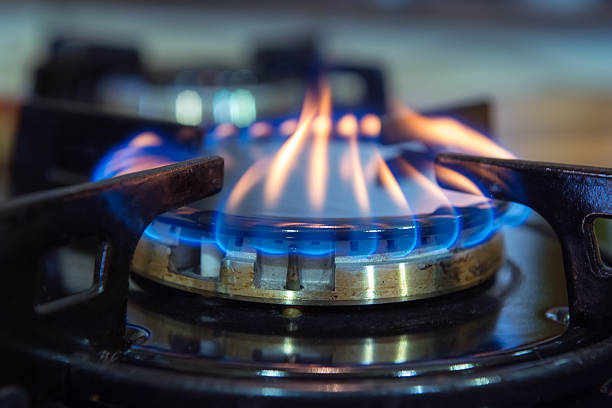How does an LPG gas burner form a flame?
Natural Gas – Liquefied Petroleum Gas (LPG)
- LPG is liquefied petroleum (natural) gas seen in the post.
- LPG is propane or butane (bottled gas) which has a higher energy content per unit of mass
- LPG has double energy heat content: 93.2MJ/m³ vs pure natural gas (methane) at 38.7MJ/m³
- The air-to-gas ratio for LPG (25:1) is higher than natural gas at a 16:1 ratio
- The difference between LPG and natural gas is that they are different gases with different distribution, as well as different energy content, density, gas: air mix for combustion and working pressure
- Propane is LPG vs natural gas as methane. Gas bottles are used to supply LPG vs natural gas conveyed by pipeline.
- LPG is much more efficient than natural gas and is now cheaper in many cases.
- LPG (liquefied petroleum gas) gas stoves are commonly used in households for cooking. The working principle of an LPG gas stove is fairly simple.
- When you turn on the knob of a gas stove, it opens a valve that allows LPG gas to flow out from the cylinder through a pipe to the burner. The gas flows through small holes on the burner, which are also known as burner jets.
- The burner jets release the LPG gas in the form of small flames that are ignited by a spark from the igniter. The igniter is a small device that generates a spark by creating an electric arc between two electrodes.
- Once the gas is ignited, it burns and produces a blue flame that heats up the cookware placed on top of the burner. The intensity of the flame can be adjusted by turning the knob, which controls the amount of gas flowing through the burner jets.
- The gas stove is designed to maintain a steady flame that provides an even source of heat for cooking. When you turn off the knob, the valve closes, stopping the flow of gas to the burner and the flame goes out.
- It is important to ensure that the gas stove is well-maintained and checked regularly for leaks, as LPG gas is highly flammable and can be dangerous if not handled with care
Why LPG Gas is used for cooking?
- LPG is an odorless and colorless gas.
- But a special odor is intentionally added to check the potential leak
- It does not produce any significant pollution compared oil or wood-firing
Working Principle of LPG Gas Burner
- The burner works on the principle called the venturi- effect
- when a gas passes through a gas pipe that narrows or widens, the velocity and pressure of the gas vary
- When the pipe is narrows, the flow of gas is more rapidly
- When the gas flows faster through the narrow sections the pressure decreases.

- LPG gas stove consists of a venturi for mixing air and LPG gas

- LPG Gas stove Venturi consist of throat

- Different types of venturi

- Venturi Design

Burner Flame
- Flame colour can be bluish or yellow red


Parts of LPG Gas Stove
- Parts of Gas stove

- Tow burner Gas Stove

For more details of gas burner you can visit CFD Flow Engineering for combustion and emission
